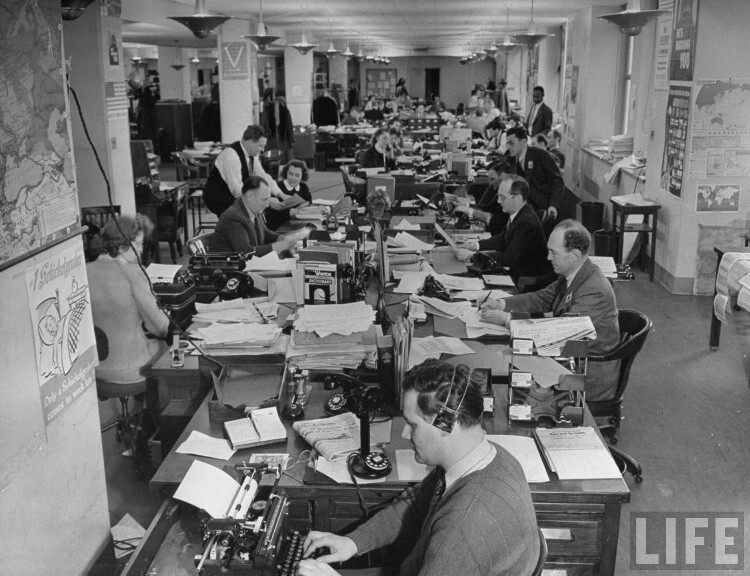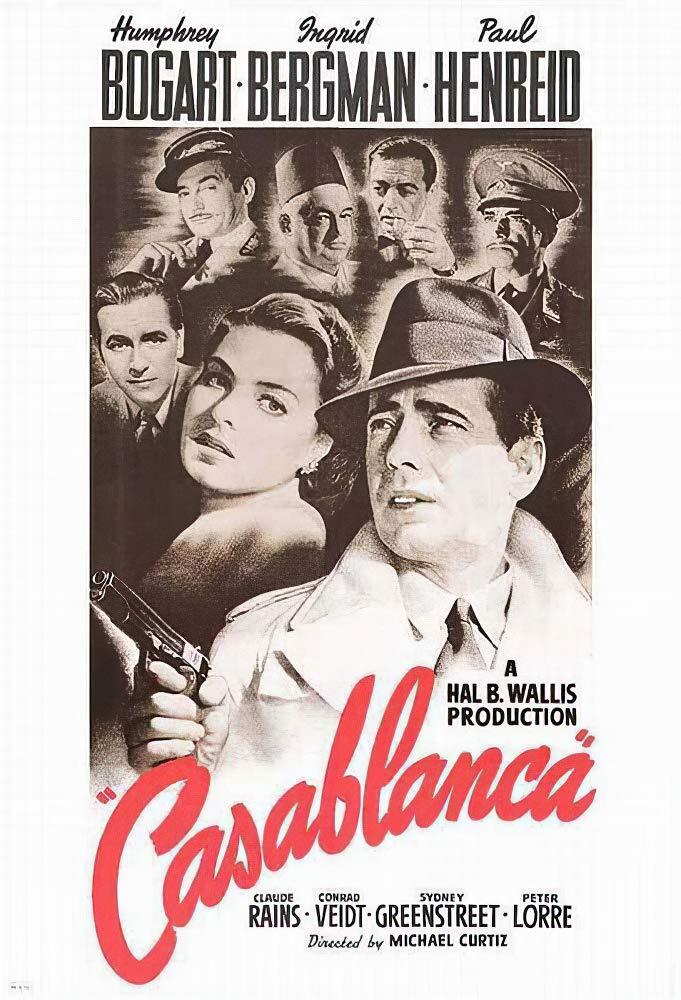Propaganda and the OWI
In June of 1942, the United States established the Office of War Information (OWI) to manage the development of propaganda domestically and in foreign nations. While responsible for all forms of pro-United States doctrine, one major type they oversaw was film. As part of this responsibility, the OWI reviewed scripts for films that studios were producing and made alterations to ensure that they portrayed the United States and their entry into the war in a positive light while the Axis powers were cast as villains. Hollywood served as a liaison between the OWI and the public, as its messaging could be more subliminal than other forms of propaganda. Films still existed as a means of entertainment while other forms such as posters were created solely to gather support.
One example of Hollywood propaganda as mass entertainment was the 1942 movie "Casablanca." Originally written as a stageplay titled "Everybody Comes to Rick's" in 1940, the unproduced script was bought by Warner Brothers in 1942 after the events of Pearl Harbor and the United States entry into World War II. The fictional story was set against the backdrop of World War II and has a clear political stance with the Nazis being the villains of the film. Additionally, the film supports the message that contributing to the war is a sacrifice that is made for the greater good. This theme reassured the American audience that the efforts they or others may have made were for a righteous and noble cause.
Castle Films 1944
Other film productions known as newsreels used real war footage to provide public updates on the war effort. Castle Films was one such studio that was given footage by the government to transform into a news report that could inform and inspire the public. Narration was added to give context and to lend a patriotic zeal and tone. The footage was not reduced to U.S. troops alone, as American allies were also portrayed in a heroic light. In this case, one clip featured the French Resistance and their struggle against the Nazi regime.
OWI Scripts reviewed between September 1943 and August 1944
The OWI proved to be largely successful in its influence over Hollywood, as it was able to persuade film studios to alter their scripts a majority of the time. In the graph above we can see the percentage in which the film studio made the suggested changes based on the types of objectionable material. Also, this data does not account for the fact that the OWI published instructions called the "Manual for Motion Picture Industry" on what constituted an acceptable film. Therefore many scripts sent to the office did not need to be altered as they already met the guidelines.

